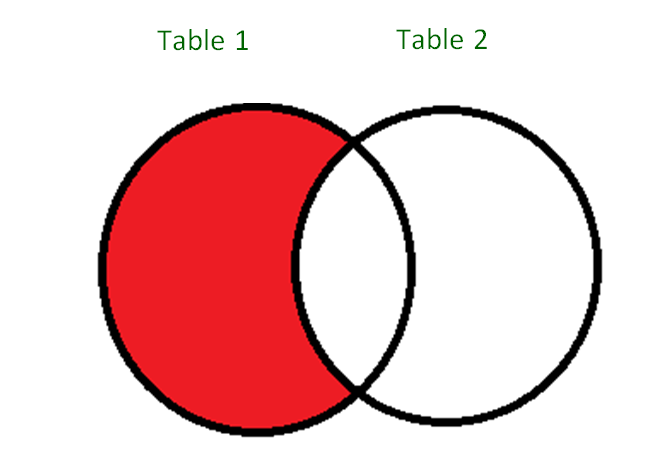LINQ has been designed to handle collections of objects and values - the main interface being IEnumerable.
LINQ is easy to use because it is a series of extension methods - meaning that adding using statement (using System.Linq;)is all that is needed to get started.
LINQ provides methods like .Add() and .AddRange(), but not a .Subtract() method. This is something that is fairly easy to add... In order to create this functionality, extension methods can be created in the System.Linq namespace in the following manner.
using System.Collections.Generic;
namespace System.Linq
{
public static partial class Extensions
{
/// <summary>
/// Copies the specified collection.
/// </summary>
/// <typeparam name="T">The element type</typeparam>
/// <param name="collection">The collection to copy.</param>
/// <returns>A new collection</returns>
public static IEnumerable<T> Copy<T>(this IEnumerable<T> collection)
{
var list = new List<T>();
list.AddRange(collection);
return list;
}
/// <summary>
/// Subtracts the specified collection from the collection.
/// </summary>
/// <typeparam name="T">The element type</typeparam>
/// <param name="collection1">The collection to subtract from.</param>
/// <param name="collection2">The collection to subtract.</param>
/// <returns>A new, possibly shorter list, of objects from collection1</returns>
public static IEnumerable<T> Subtract<T>(this IEnumerable<T> collection1, IEnumerable<T> collection2)
{
return collection1?.Subtract(collection2, Comparer<T>.Default.Compare);
}
/// <summary>
/// Subtracts the specified collection from the collection.
/// </summary>
/// <typeparam name="T">The element type</typeparam>
/// <param name="collection1">The collection to subtract from.</param>
/// <param name="collection2">The collection to subtract.</param>
/// <param name="compareCallback">
/// The compare callback
/// (returning 0 means it will be subtracted).
/// </param>
/// <returns>A new, possibly shorter list, of objects from collection1</returns>
public static IEnumerable<T> Subtract<T>(this IEnumerable<T> collection1, IEnumerable<T> collection2, Comparison<T> compareCallback)
{
var list = new List<T>();
if (collection1 == null) { return list; }
if (collection2 == null) { return collection1.Copy<T>(); }
foreach (T item in collection1)
{
bool shouldAdd = true;
foreach (T item2 in collection2)
{
if (compareCallback(item, item2) == 0 ||
EqualityComparer<T>.Default.Equals(item, item2))
{
shouldAdd = false;
break;
}
}
if (shouldAdd) { list.Add(item); }
}
return list;
}
// <summary>
/// Subtracts the specified collection from the collection.
/// </summary>
/// <typeparam name="T">The element type</typeparam>
/// <param name="collection1">The collection to subtract from.</param>
/// <param name="compareCallback">Evaluating to true subtracts from the list.</param>
/// <returns>A new, possibly shorter list, of objects from collection1</returns>
public static IEnumerable<T> Subtract<T>(this IEnumerable<T> collection1, Func<T, bool> compareCallback)
{
var list = new List<T>();
if (collection1 == null) { return list; }
foreach (T item in collection1)
{
if (!compareCallback(item))
{
list.Add(item);
}
}
return list;
}
}
}
While not the most efficient method, this at least gets the functionality we desire. But lest's test it!
For our test, we'll make a simple test to demonstrate comparison.
/// <summary>
/// A simple class to demonstrate comparison
/// </summary>
/// <seealso cref="System.IComparable" />
class ComparableClass : IComparable
{
// backing field for ID
private int _id = 1;
/// <summary>
/// Gets or sets the identifier.
/// </summary>
public int ID { get { return _id; } set { _id = value; } }
/// <summary>
/// Compares the current instance with another object of the same type and
/// returns an integer that indicates whether the current instance precedes,
/// follows, or occurs in the same position in the sort order as the other object.
/// </summary>
/// <param name="obj">An object to compare with this instance.</param>
/// <returns>
/// A value that indicates the relative order of the objects being compared.
/// < 0 : This instance precedes <paramref name="obj" /> in the sort order.
/// 0 : This instance occurs in the same position in the sort order as <paramref name="obj" />.
/// > 0 : This instance follows <paramref name="obj" /> in the sort order.
/// </returns>
public int CompareTo(object obj)
{
var o = obj as ComparableClass;
if (o == null) { return -1; }
if (o.ID > this.ID) { return -1; }
if (o.ID < this.ID) { return 1; }
return 0;
}
}
Now, using this class, we'll build a few lists and test the subtract method.
IEnumerable<ComparableClass> c = new List<ComparableClass>()
{
new ComparableClass() { ID = 5},
new ComparableClass() { ID = 1},
new ComparableClass() { ID = 3},
new ComparableClass() { ID = 2},
};
IEnumerable<ComparableClass> d = new List<ComparableClass>()
{
new ComparableClass() { ID = 5},
new ComparableClass() { ID = 4},
new ComparableClass() { ID = 3},
};
var method0results = c.Subtract(d);
var method1results = c.Subtract(d, (ce, de) => de.CompareTo(ce));
var method2results = c.Subtract(ce => d.Any(de => ce.CompareTo(de) == 0));
// Assert we get the expected results
Assert.IsTrue(method0results.Count() < c.Count());
Assert.IsTrue(method1results.Count() < c.Count());
Assert.IsTrue(method2results.Count() < c.Count());
Assert.IsTrue(method2results.Count() == method1results.Count());
Assert.IsTrue(method1results.Count() == method0results.Count());
As all the assertions pass, we have successfully demonstrated the .Subtract() method works!
